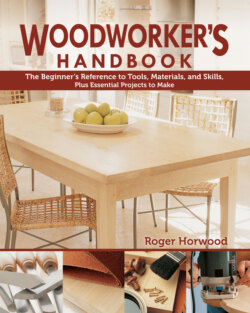Читать книгу Woodworker's Handbook - Roger Horwood - Страница 8
На сайте Литреса книга снята с продажи.
Natural Wood
ОглавлениеThis category is divided into two major groups: softwoods and hardwoods. When applied to wood, the terms “soft” and “hard” are usually in relation to each other, but there are exceptions. Balsa, for example, is physically probably one of the softest woods available commercially, but due to its makeup, it is scientifically classified as a hardwood. Balsa is a light wood, both in weight and in color, and has very little structural strength. It is not used for furniture making, but mainly in the construction of model airplanes and other such projects.
At the other end of the scale are hardwoods, such as teak and ironwood, which are amazingly strong, hard, and durable.
There are literally hundreds of different natural woods, and it is important that you select wood with the characteristics you require for the type of project you have in mind. This choice will be governed by factors such as durability, strength, practicality, and color. For example, most ordinary kitchen and children’s furniture will be made from pine, as it is relatively inexpensive, easy to work, and it doesn’t matter too much if it is abused through everyday use. On the other hand, dining-room and lounge furniture will usually be made from an attractive and relatively expensive hardwood, as it is important that the furniture is aesthetically pleasing as well as long-lasting.
The name of each wood represented in this chapter is, in most instances, the common name for a number of varieties within that species. Although it is possible to import almost any wood available on world markets, the type of wood you use within each group will largely depend on what is the easiest to obtain in your location.
